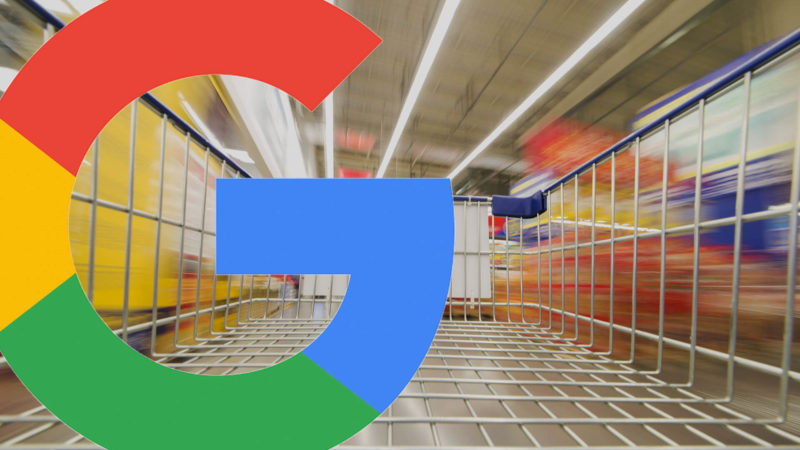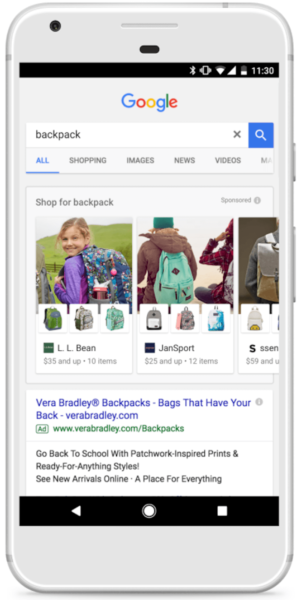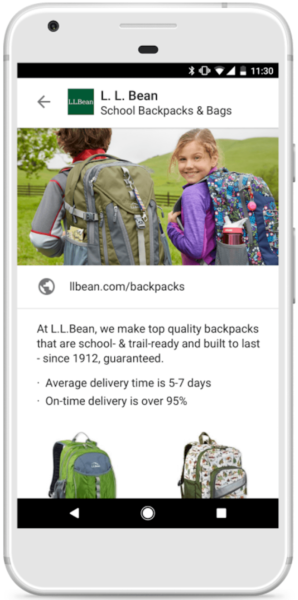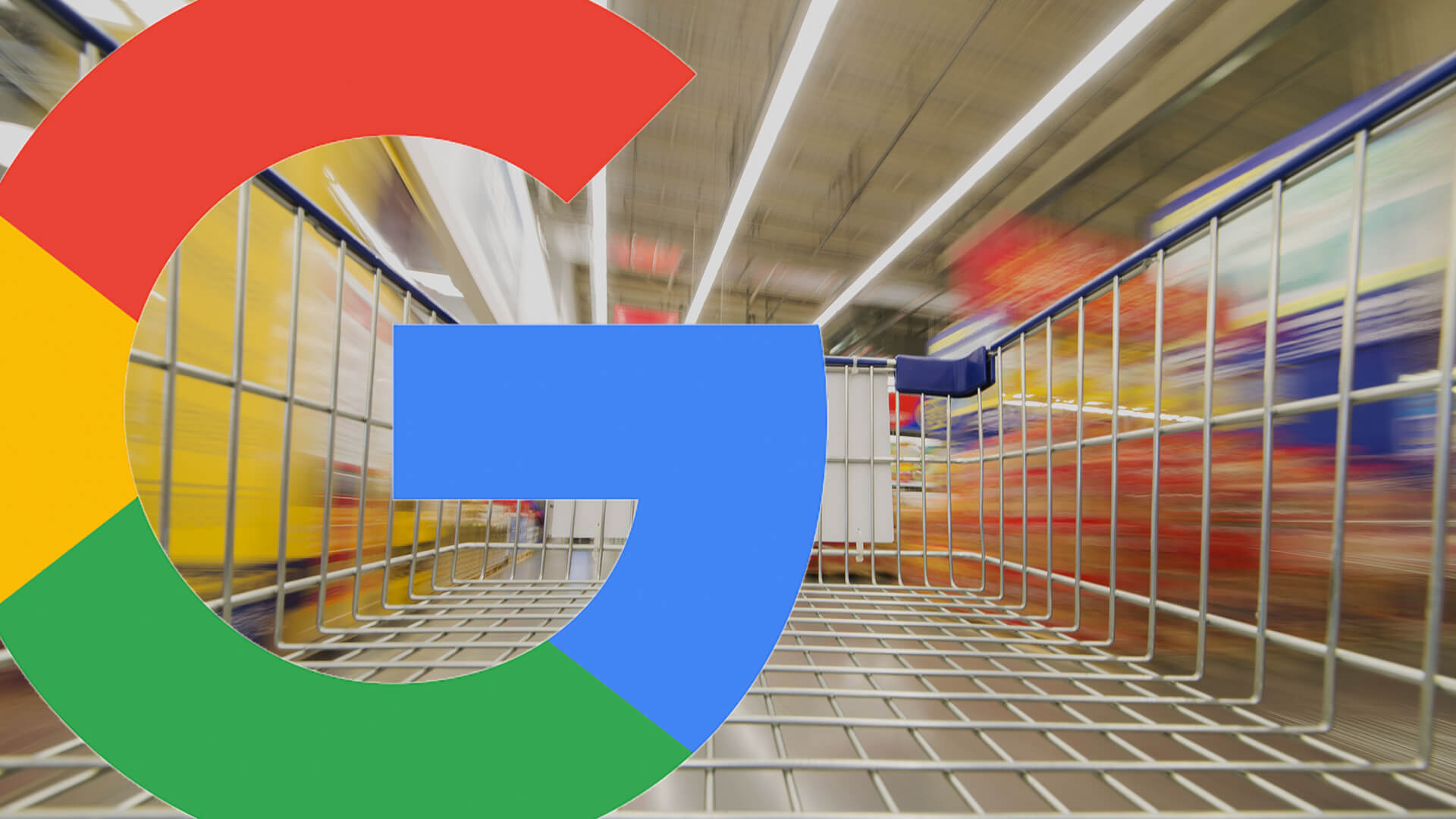
Shopping ads are great, and they continue to improve. If you’re looking to get more out of your Shopping campaigns, there are some straightforward actions you can take. Some of these have been true since Shopping campaigns were introduced back in 2013, while others are relatively new.
Regardless of where you are on your Shopping campaign journey, here are the top seven things I’d recommend to take your campaigns to the next level.
1. Establish clear lines of communication with other teams
A Shopping ad assembles a bunch of data to deliver an ad to a user. For larger retailers, it often takes teamwork to ensure that you’re providing Google with the ideal set of data for the best possible ad.
As a search engine marketer, you and your team may be primarily concerned with your Shopping campaigns within AdWords. In addition to that, you may have some control over your Merchant Center account. However, you may have to work with different teams for things like data feeds, your product catalog and pricing on your items. For example, an AdWords practitioner may rely on a feed team to avoid breakages (like unavailable products) and find the best opportunities (like niche products you might not be promoting yet).
Talk to one another. The importance of teamwork can’t be overstated. You all have the same goals, so ensure you’re on the same page with your teammates. Also note that Google recently announced some changes that give marketers more controls to modify and improve their product data directly in Merchant Center.
2. Let your product data do the talking (and shed your search ad mentality)
Like many, I’ve been doing search ads for years. Shopping ads are a much more recent addition to the online marketing landscape. As a result, a bunch of people apply a traditional paid search mentality to their Shopping campaigns. While that can be a good thing, there are some pitfalls to avoid.
The biggest difference is that you have product data instead of a keyword list. Your site (and your products) connect with user queries like they always did, but the mechanism for that connection is different. Focus on your product data. A focus on product data accounts for different situations — situations where keywords won’t always match the intent. A user’s motivation for searching could be anything from research to getting ready to buy at that moment.
I recognize that people love having control over their accounts (it’s one of those things all search marketers have learned over the years), but that mindset can actually lead you to creating a lot more work for yourself. Overly intricate Shopping campaigns that attempt to replicate a product-level, keyword-like structure are a bad idea. They are a pain to maintain, and they don’t even improve performance (check out slide 6 here for a non-Googler’s POV). I’ve even seen cases where they make things worse. I’d suggest simpler structures like grouping by popular brands, categories or profit margins.
You should use things like campaign priorities to direct traffic, but trying to force Shopping ads into a text ad mentality can do more harm than good.
3. Submit your entire inventory
Submit your entire inventory to Merchant Center. More products means more chances to get in front of customers.
I’ve also heard of advertisers not submitting certain products believing that they will never be profitable. If you’ve ever worried about that yourself, give Target ROAS a shot. With the right target in place, you’ll have a chance to sell that product while still keeping a sharp eye on profitability.
Here’s an important caveat, though: If you’re in a sensitive category — think health care or pharmaceuticals — be careful about what you submit. Those rules can be stricter.
Additionally, the days of frequent account-level suspensions are behind us. Product-level disapprovals are now the preferred approach, so if you make some sort of error, the penalty won’t be nearly as painful as it might have been in the past. Our goal is to deliver the best possible results (including ads) for users, advertisers and Google. The more stuff you give us to work with, the better user experience we can deliver.
4. Use Smart Bidding to set bids at the query level
You can still optimize product-by-product (query-by-query, really) with your Shopping ads. Both enhanced cost-per-click (ECPC) and Target ROAS set bids based on the specific context of each and every query; depending on that context, the same query can have wildly different values. Smart Bidding is the best way to get query-level bidding. It’s the only way to set bids specific to each query, actually.
With ECPC, you set your own bids for the product group, then those bids are tweaked either up or down for each auction to maximize the total conversions you can receive at that bid. Target ROAS does more of the heavy lifting. All you have to do is provide a target return for it to optimize toward, and it will bid toward queries with high purchase intent.
5. Build your brand with Showcase Shopping ads
As you go about finding the ideal pictures to include in your product data, you should also think about presenting a more complete picture of your brand on Shopping. Showcase Shopping ads are more likely to show when people search for general items — think “lighting” instead of “hand blown glass 3-light lantern.”
Showcase Shopping ads are a great way to show off a selection of products that you offer. They’re also a great way to reach people earlier in their purchase journey.

Showcase Shopping ad

Showcase Shopping expanded ad
Showcase Shopping ads are available via the API or the new AdWords experience.
6. Move beyond last-click attribution
Shopping ads can take advantage of data-driven attribution in AdWords. If you’re still waiting to take the non-last-click attribution plunge in AdWords, do it now. Across both your search and Shopping ads, you can see which clicks make a real difference on the way to conversions.
And if you don’t have enough traffic for data-driven attribution, we recommend choosing a rules-based model that values all touch points.
7. Connect your ads to physical stores
Local inventory ads bring the stuff that’s in your store online. And they drive foot traffic to your stores with local information. At Google, we studied this last year and found that consumers who clicked on a retailer’s Google Search ad before visiting the store are over 25 percent more likely to buy something in-store, and they spend 10 percent more on average (Source: Google data, Oct-Nov 2016).
I started off by talking about Shopping ads being a team sport. To that end, don’t neglect your in-store team members. To a consumer, your ads and your store locations are one and the same. Even if you report to different bosses, you and your in-store compatriots should have the same goals.
Conclusion
Shopping ads deliver great results for users and advertisers. Hopefully, you’ve been able to pick up a new tactic or two from this article that you can use to see even better performance from your Shopping campaigns.
Contributing authors are invited to create content for Search Engine Land and are chosen for their expertise and contribution to the search community. Our contributors work under the oversight of the editorial staff and contributions are checked for quality and relevance to our readers. The opinions they express are their own.



